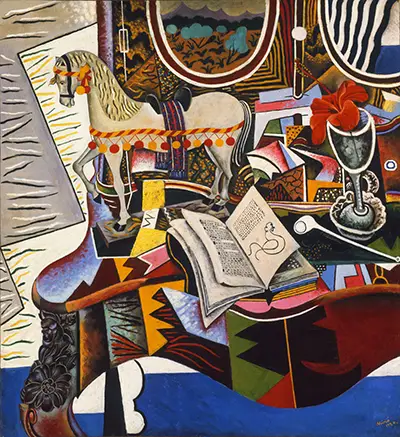 Buy Art Prints Now
Buy Art Prints Nowfrom Amazon
* As an Amazon Associate, and partner with Google Adsense and Ezoic, I earn from qualifying purchases.
Miro produced this detailed piece in 1920, and it can now be found at the Philadelphia Museum of Art, alongside another of his more famous paintings, Dog Barking at the Moon.
His early years as an artist were filled with experimentation though he always appeared keen on following a relatively modern style. Having already declared war on traditional art, this period of his career involved detailed compositions which underlined his impressive technical skills. At this point, no-one would have predicted the extreme levels of abstraction that he would later use, several decades later. Some actually prefer the style of art found in earlier pieces such as Horse, Pipe and Red Flower, but there is plenty of room for different tastes within Miro's varied oeuvre. One might argue that the Cubist influences which occured early in his career are clearly present in this painting, compare it to the work of Braque and Gris, for example.
Within this scene, it is the horse that initially grabs our attention, with its elegant stance and pretty decorative touches. Closer to us is a small book, alongside the pipe mentioned in the title and also a particularly large glass. We can make out the leg from furniture on which most of the items are placed. There are then a huge number of other details which are a little harder to identify amidst a frenzy of colour. At the back is a window offering a view outdoors, although it might in fact simply be a landscape painting hanging on a wall. The carpet below is a bright blue, a colour which persists throughout the artist's career, and there is also a series of patterns on the wall that sits at the very back. The palette found in this painting is fairly diverse, particularly when compared to his later abstract artworks which made use of just four or five colours in total.
Miro produced a number of his best work in the village of Montroig and this is one such example of that. We have since found out that the book on the table is actually a title by Jean Cocteau, titled The Rooster and the Harlequin and both of those topics appeared in a number of his own paintings. Miro was a close friend of Picasso, and the latter had actually completed illustrations for this publication, so perhaps Joan was studying them for his own artistic interest.




